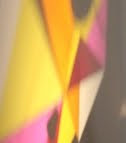
last night we participated in a performance of phil kline's unsilent night, a work he has presented publicly during the holidays in new york for the last 15 years. created as a kind of alternative to holiday songs and caroling, this was the first time it has been performed in los angeles, and it was quite a wonderful evening.
at 6:30 pm, i'm guessing about 250 people gathered at pan pacific park in the mid wilshire area. the 50 or so people who brought boom boxes were given cds or cassettes, and at around 7 pm we all started the music and began a 30 minute walk around the darkened park. it was a beautiful brisk evening.
at the beginning, it felt like all the boom boxes were playing the same thing, but after a few minutes, the music, which sounded like it was mainly composed with synthesizers, and/or voices with tons of reverb, began to shift. as the piece evolved, the sound coming out of each boom box became much more distinct; and because everyone had a different audio system, the variety of speakers added to the different sound colors. eventually, as we became more of a line than a clump, the sound became a spatial cloud with one's own sounding box as a kind of center.
we followed the leader's star shaped ballon along the park's path, until we ended up at a small outdoor amphitheater, where the drones and washes turned into chime sounds. the last 15 minutes or so were spent seated in the dark, listening to the various cds end. the soundscape got smaller and smaller until the last disc went quiet. this last section of the music was beautiful.
there were many things about the experience that were really lovely; particularly being audience and performer at the same time. there were moments that were incredibly intimate and moments that felt extremely communal; and there were moments of passivity, as well as moments of focus. some people talked a bit, but for the most part it was not a distraction as the atmosphere was more of a gathering than a performance.
surprisingly, the music never felt random. it was compelling at times (referencing minimalism and synth potentials), and perhaps a little too new agey at others (i heard someone mention "tubular bells"); but in many ways, although it wasn't secondary, the music became a soundtrack for an experience rather than a composition in and of itself. the sound became a vehicle for a different kind of musical activity, and so the listening became more important than the listened to - and in a way, the fact that we were all producing the sound became more important than the sound produced.
i think particularly because we had all volunteered to help create the piece, rather than pay to sit in a space and listen to it, the dual role of participant and audience shifted one's notion of a concert experience (and in a way, improvised music because many of us were manipulating the boom box controls or swinging the speakers as we strolled). it was totally different than the few performances i've seen where audience members are handed speakers or instruments in their seats, as there was no physical or implied separation of performer and audience at all.
like film music that is always dependent upon a specific scene; i'm not sure unsilent night would be a great listen on it's own, but as fuel for an experiential fire it definitely burned brightly. you can hear a bit of it here, and i would encourage folks to check out the schedule as it's being done in a number of other cities around the holidays; and check out kline's discography, his work should definitely be better known.


















































